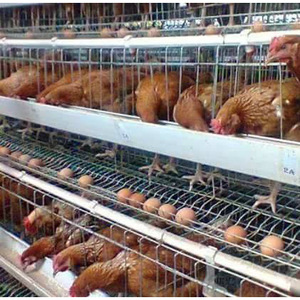Precautions for raising laying hens when using layer cages
- font size
- Be the first to comment!
The temperature and air quality vary from season to season. Therefore, in order to enable the laying hens to produce more eggs and increase the income of the breeding, the farmers need to nurse the laying hens during the season to ensure that they can produce more eggs and increase economic benefits. Today, the author refers to the experience of the poultry farming equipment manufacturer, to introduce the farmers to some matters that should be paid attention to during the nursery.
1. Appropriate increase in lighting time. Natural light is prolonged in spring and summer, and natural light is gradually reduced in the fall and winter. Therefore, it is necessary to give the laying hens a moderate amount of light. The poultry equipment manufacturer reminds farmers to use 3 lux for the ground light intensity when supplementing the laying hens. The lights are turned on twice a day. The first time the lights are turned on at 4-5 am until dawn, the second time the lights are turned on until 20-21 in the dark, and the lights are turned on during the rainy weather.

2. Increase the nutrition of the feed. Spring is the season for laying hens with high egg production. At this time, new laying hens need to be supplemented with nutrient-rich feed to increase their yield. In the autumn, because the laying hens have experienced a long egg laying period and a hot summer season, the chicken body is fatigued. At this time, it is necessary to feed more animal protein feed and add multivitamins to the feed.
3. Adjust the flock. Timely elimination of some of the valueless laying hens, such as low egg production, discontinued chickens, weak chickens, stiff chickens, short peak egg production, and severe convulsions.
4. Force moulting. By forced moulting, the laying hens can be simultaneously moulted and started. Manual forced moulting can add 2.5% zinc oxide or 4% zinc sulfate to the laying hen's diet. Water can not be stopped during the feeding of high-quality diets, and the time of light can be reduced to 6-8 hours per day.
5. Deworming at the right time. In the autumn of the year, it is the best time for laying hens to deworm. The farmers can use levamisole hydrochloride and sputum to remove insects.
The above is what the farmers are telling. The precautions for raising the laying hens are now in the exchange stage of the season. When the farmers are nursed back to the laying hens, they can try some things that are mentioned today.


